Talk with our local travel specialist who can help organize your trip.
Entrance Fee To Visit National Parks In Nepal
National Parks are the main tourist attraction as it shields Nepal's rare ecosystem in the rugged mountains, glaciers, valley, and rivers. The affluent biodiversity spans across Terai, hills, and Himalayas in national parks, conservation areas, wildlife reserves, and hunting reserves. Apart from wildlife, the parks are also inhabited by indigenous ethnic communities in Nepal.
Visiting the National Parks is an excellent way to explore the true beauty of Nepal. Many treks and tours are conducted in these protected areas. If the trail falls on these areas then an entry fee is necessary. While some entrance tickets can be collected at the checkpoint, others can be purchased in advance from the National Parks Office located in Tourism Serve Centre in Thamel, Kathmandu. The costs collected are utilized for the conservation of the wildlife in the areas. The entrance fee is positively discriminated based on citizenship and age.
Refer to the updated entrance fees to National Parks in Nepal, mentioned below:
Table of Content
- Chitwan National Park
- Sagarmatha National Park
- Langtang National Park
- Banke National Park
- Bardia National Park
- Khaptad National Park
- Makalu-Barun National Park
- Parsa National Park
- Rara National Park
- Shey-Phoksundo National Park
- Shivapuri Nagarjun National Park
- Shuklaphanta National Park
- Koshi Tappu Wildlife Reserve
- Dhorpatan Hunting Reserve
- Annapurna Conservation Area
- Manaslu Conservation Area
- Gaurishanker Conservation Area
- Kanchenjunga Conservation Area
- Api Nampa Conservation Area
- Blackbuck Conservation Area
- Conclusion
1. Chitwan National Park
Chitwan National Park is the first national park in Nepal. The national park is home to the endangered Bengal Tiger and One-horned Rhinoceros among other flora and fauna. In 1973, it became the first National Park to be inducted into the World Heritage Site list.
The park is also renowned for the Elephant Breeding Camp and Gharial Breeding center, the first of its kind in Nepal. Apart from the abundance of animals, birds and reptiles found in the area, it is also known best for the indigenous local Tharu community living in the buffer area. It is the most renowned and apt place to learn about the lush nature and traditional lifestyle of ethnic communities in Nepal.
The entrance fee must be paid at either the Sauraha Entry station in the east or the Meghauli village in the west.
Entrance Fees:
|
Nepali |
NPR 150 per person |
|
SAARC Nationals |
US$ 10 per person |
|
Foreigners |
US$ 20 per person |
|
Child Discount |
Below 10 years free |
|
Remarks |
|
2. Sagarmatha National Park
Sagarmatha National Park is home to the highest mountain in the world, Mt. Everest. Located in Nepal's eastern Himalayas, in 1979, it became the first national park in the country to be inscribed as a Natural World Heritage Site. The park covers the Dudh Koshi and Bhotekoshi river basin up to the Gokyo Lakes.
It boasts some of the highest peaks over 8000m like Lhotse and Cho Oyu. The alpine zone is home to Himalayan flora like fir, Juniper, rhododendron, and unique fauna like Impeyan pheasant, Himalayan Thar, Musk deer, and the rare Snow Leopard. It is a must-visit sight for trekkers, best during Autumn and Spring.
Entrance Fees:
|
Nepali |
NPR 100 per person |
|
SAARC Nationals |
US$ 15 per person |
|
Foreigners |
US$ 30 per person |
|
Child Discount |
Below 10 years free |
3. Langtang National Park
Langtang National Park is the first Himalayan National Park of Nepal built-in 1976. The park boasts a snowy Langtang mountain range, bordering close to Tibet. It is an escapade into the nature and culture of the Langtang Valley located in the central Himalayan region, about 80km away from Kathmandu city.
The Sacred Himalayan Landscape is a less crowded park inhabited by the native Tamang community. The park's tropical and alpine forest is home to the rare Red Panda and Impeyan Pheasant, the national bird of Nepal. The entrance fee can be provided at the entry point in Langtang which is collected as it is a protected area.
Entrance Fees:
|
Nepali |
NPR 100 per person |
|
SAARC Nationals |
US$ 15 per person |
|
Foreigners |
US$ 30 per person |
|
Child Discount |
Below 10 years free |
Where to travel next?
Get help from our travel specialists for holiday ideas that matches your interests.
4. Banke National Park
Banke National Park is located in the mid-western region, 15km from the nearest Nepalgunj airport along the Mahendra Highway. It was declared a national park in 2010. Locals also revere it as a Gift to Earth’ for its abundant biodiversity. The park spans across the districts of Banke, Salyan, and Dang.
This national park's major attraction is the chance to spot Bengal Tiger and four-horned antelope in the virgin trail. Furthermore, the park is also composed of around 113 trees, 107 herbs, and 85 shrub species. Entry tickets can be purchased by paying the fee at the entry point.
Entrance Fees:
|
Nepali |
NPR 100 per person |
|
SAARC Nationals |
US$ 7.5 per person |
|
Foreigners |
US$ 15 per person |
|
Child Discount |
Below 10 years free |
5. Bardia National Park
Bardia National Park is the largest national park in the low Terai of Nepal. Located in the Bardiya District, it neighbors the newly formed Banke National Park. Bardiya National Park is famous for many nature-bound activities like Jungle Safari, Butterfly watching, and Bird watching.
Unlike the relatively popular Chitwan National Park, Bardia is not overcrowded, so you will have acres of flora and fauna to yourself. Many tourists have also been lucky to spot the Bengal Tiger and One-Horned Rhino.
Entrance Fees:
|
Nepali |
NPR 100 per person |
|
SAARC Nationals |
US$ 7.5 per person |
|
Foreigners |
US$ 15 per person |
|
Child Discount |
Below 10 years free |
6. Khaptad National Park
Khaptad National Park often described as ‘the living garden of herbs’ is located in Nepal's far western region. The uncrowded site stretches over Bajhang, Bajura, Achham, and Doti. The entrance fee will have to be paid at the main entrance in Silgarhi Bazaar in Doti.
It was made a national park in 1984 on hermit Khaptad Baba's advice who meditated in this area. Hidden in the remote lush steep slopes, streams, and moorlands, you may spot rare fauna such as Himalayan Black Bear, Musk deer, Leopard, and White Rumped Vulture. You can explore the vast land, visit the Ashram/hermitage of Khaptad Baba and temple of Goddess Saileshwori, enjoy bird watching and meditation.
Entrance Fees:
|
Nepali |
NPR 100 per person |
|
SAARC Nationals |
US$ 5 per person |
|
Foreigners |
US$ 15 per person |
|
Child Discount |
Below 10 years free |
7. Makalu-Barun National Park
Makalu-Barun National Park is often regarded as the ‘Jewel of Eastern Nepal.’ The park is located in Nepal's eastern Himalayas with Sagarmatha National Park and Mt. Everest on the west. Established in 1992, it is the only protected area in the world with an elevation rise of more than 8,000m/26,246ft. The park starts with tropical forests, leads to alpine forests towards snow-capped peaks.
The national park's main feature is most certainly the fifth highest peak of the world, Mt. Makalu at 8463m. It is home to Snow Leopards, Himalayan Black Bear, Red Panda, beautiful birds, fishes, and reptiles. Foreigners need to present the entrance permit along with other documents at the checkpoint.
Entrance Fees:
|
Nepali |
NPR 100 per person |
|
SAARC nationals |
US$ 15 per person |
|
Foreigners |
US$ 30 per person |
|
Child Discount |
Below 10 years free |
8. Parsa National Park
Parsa National Park is located on the south-central lowland Terai of Nepal spanning the districts of Parsa, Bara, and Makwanpur. It is close to the Chitwan National park in the west. The ruling class's former hunting grounds got converted to a protected area in 1984 and National Park in 2017.
Parsa is known to have 919 species of flora, including Sal, Sissoo, and silk-cotton trees. The tall grasslands and subtropical deciduous forest are inhabited in majority by rare Indian Bisons called Gaur, Bengal tigers, and other mammals. Being a protected area, the entrance fee is a must.
Entrance Fees:
|
Nepali |
NPR 100 per person |
|
SAARC nationals |
US$ 7 per person |
|
Foreigners |
US$ 15 per person |
|
Child Discount |
Below 10 years free |
9. Rara National Park
Rara National Park, a protected area, is the smallest National Park with the deepest and biggest freshwater Rara Lake, in Nepal. It is located in the northwestern Himalayas across remote Mugu and Jumla districts. The national park's main highlight is the distinct flora and fauna and views of the surrounding Himalayas reflected in the still waters of Rara lake.
Due to little accommodation facilities in the park, it remains an uncrowded area but has been quickly gaining popularity. It is best visited during September, October, April, and May. Animals inhabit the sub-alpine park-like Musk Deer, Red Panda, Snow Leopard, Himalayan Thar, among others that drag the attention of the tourist.
Entrance Fees:
|
Nepali |
NPR 100 per person |
|
SAARC Nationals |
US$ 15 per person |
|
Foreigners |
US$ 30 per person |
|
Child Discount |
Below 10 years free |
10. Shey-Phoksundo National Park
Shey Phoksundo National Park located in the mid-western region is the only trans-Himalayan and the largest National Park in Nepal. Spanning over an area of 3555 square km, it engulfs the districts of Dolpa and Mugu. The park is near Rara National Park.
The trails to this park are quite tough due to the remote and rugged terrains. However, it poses a reason for the unspoiled spectacular diversity of the place. The trek's main highlight is the turquoise Phoksundo Lake sitting at an elevation of 3,611m/11,849ft, a Ramsar site. Visit the famous Shey Gompa Monastery, Tibetan Ringmo village, and walk through the lush Trans Himalayan slopy land.
Entrance Fees:
|
Nepali |
NPR 100 per person |
|
SAARC Nationals |
US$ 15 per person |
|
Foreigners |
US$ 30 per person |
|
Child Discount |
Below 10 years free |
11. Shivapuri Nagarjun National Park
Shivapuri Nagarjun National Park was established in 2002 as the ninth national park of Nepal. It is located in the northern outskirts of Kathmandu, a short distance from Boudha Stupa. The park is a popular hiking route for local and international tourists as part of the Kathmandu valley tour.
The entrance fee needs to be paid at the entrance of the park that is about 10 minutes walk from Budhanilkantha bus park. The park consists of a Himalayan subtropic broadleaf forest, herbs, mushrooms, and more. You might spot the Himalayan black bear deep into the forest. Tourists also enjoy birdwatching or hiking to the hilltop to Nagi Gompa Monastery.
Entrance Fees:
|
Nepali |
NPR 100 per person |
|
SAARC Nationals |
US$ 6 per person |
|
Foreigners |
US$ 10 per person |
|
Child Discount |
Below 10 years free |
12. Shuklaphanta National Park
Shuklaphanta National Park has a long history of its establishment from a hunting reserve in 1969 to a wildlife reserve in 1976 and recently a national park in 2017. It is located in the Far-western Region of the lowland Terai, bordering India to the south.
The park is known best for hosting the single largest herd of Swamp Deer in the world at 2000 in numbers. It is also noted to have 17 wild tigers. The largest grassland in Far Western Terai is home to Rhinos, Crocodiles, Wild elephants, and migratory birds. To manage and protect the park, an entrance fee must be paid.
Entrance Fees:
|
Nepali |
NPR 100 per person |
|
SAARC nationals |
US$ 7 per person |
|
Foreigners |
US$ 15 per person |
|
Child Discount |
Below 10 years free |
13. Koshi Tappu Wildlife Reserve
Koshi Tappu Wildlife Reserve is the largest wetland located in Terai of Eastern Nepal. In 1987, it became the first Ramsar site of Nepal. Established in 1976, it covers the area of Sunsari, Saptarri, and Udaypur districts. The reserve protects the last remaining population of Asian wild buffalos in Nepal.
It reserves rare birds such as swamp francolin, Baer’s pochard, greater spotted eagle in the haven of the marshes, swamps, grassland, forest, mudflats, lakes, and ponds. You can indulge in a lot of activities like Bird watching, Jeep Safari, Wildlife Rafting, and Jungle walk.
Entrance Fees:
|
Nepali |
NPR 100 per person |
|
SAARC nationals |
US$ 7 per person |
|
Foreigners |
US$ 15 per person |
|
Child Discount |
Below 10 years free |
Where to travel next?
Get help from our travel specialists for holiday ideas that matches your interests.
14. Dhorpatan Hunting Reserve
Dhorpatan is a village located in Nepal's Mid-Western region, which has the only hunting reserve in Nepal. The reserve is located southwest of Dhaulagiri I peak and Annapurna Conservation Area. It offers an elusive experience of the wide marshland called 'Dhor’ and flat meadows called ‘Patan’ in Nepali.
Dhorpatan Hunting Reserve was established in 1987 and is home to 18 species of mammals like Snow Leopard, Musk Deer, Red Panda, and Blue Sheep. Hunting in the reserve requires a special hunting permit. Apart from the reserve, you can also explore the Dhorpatan village which is inhabited by the indigenous Kham Magar community and Tibetan Refugees. Entry permits for the reserve can be collected in Kathmandu or Pokhara and shown at the Dhorpatan checkpoint.
Entrance Fees:
|
Nepali |
NPR 100 per person |
|
SAARC nationals |
US$ 15 per person |
|
Foreigners |
US$ 30 per person |
|
Child Discount |
Below 10 years free |
15. Annapurna Conservation Area
Annapurna Conservation Area is the largest protected area in Nepal, spanning 7629 square km. The area is home to diverse flora and fauna and cultural settlements. It proudly boasts Annapurna Massif with Annapurna I, the tenth highest mountain globally at 8,091m/26,545ft. It encompasses the districts of Manang, Mustang, Kaski, Myagdi, and Lamjung.
Launched in 1986 by National Trust for Nature Conservation, it is best known for hosting the most popular treks like Annapurna Base Camp Trek, Annapurna Circuit Trek, and more. It is one of the most advanced protected areas with proper trails, road access, and accommodation. The area is rich in biodiversity with 1226 flowering plants, 105 mammals, 518 birds, 40 reptiles, and 23 amphibians.
Entrance Fees:
|
Nepali |
NPR 100 per person |
|
SAARC nationals |
US$ 10 per person |
|
Foreigners |
US$ 30 per person |
|
Child Discount |
Below 10 years free |
16. Manaslu Conservation Area
Manaslu Conservation Area is a remote protected area circling the eighth highest peak in the world, Mt. Makalu at 8,152m. It is situated in the far north belt in Gorkha district with Annapurna Conservation Area in the west and Langtang National Park in the east. Comprising of high mountains, glaciers, and watercourses, it was declared a conservation area in 1998.
Flora and fauna of the Manaslu Conservation Area make it an ideal place to visit for nature lovers. Snow leopards, Himalayan Thar, and Musk Deer are just some of the fauna found here. The area boasts over 1500 species of flowering plants alone. Hence it is desirable for trekking with trails like Manaslu Circuit.
Entrance Fees:
|
Nepali |
NPR 100 per person |
|
SAARC nationals |
US$ 10 per person |
|
Foreigners |
US$ 30 per person |
|
Child Discount |
Below 10 years free |
17. Gaurishanker Conservation Area
Gaurishanker Conservation Area spans across Nepal's northeastern region in Rolwaling Valley, besides the Langtang National Park. It was designated as a protected area in 2010 and encompasses districts of Ramechhap, Dolakha, and Sindhupalchok. The Sacred Himalayan Landscape claims the Gauri Shankar peak (7181m/23,406ft) with the Tama Koshi river flowing in between.
The subtropical to the temperate area is home to some remote area trekking trails like Numbur Cheese Circuit and Rolwaling Valley Circuit. It is inhabited by 34 species of mammals, 235 species of birds, and many reptiles and fishes.
The off-beat trail is best for bird watching, peak climbing, adventure sports, trekking. You can get to the conservation area by heading to Singati Bazaar, drive alongside the Bhote Koshi river, or drive to Jiri. You can get the entry permit from Kathmandu itself.
Entrance Fees:
|
Nepali |
NPR 100 per person |
|
SAARC nationals |
US$ 10 per person |
|
Foreigners |
US$ 30 per person |
|
Child Discount |
Below 10 years free |
18. Kanchenjunga Conservation Area
Kanchenjunga Conservation Area is located in the eastern Himalayan region bordering India in the east and Tibet in the north. It is a part of the Great Himalayan Range and is dominated by Mt. Kanchenjunga, the third highest mountain in the world at 8586m/28,169ft.
The less frequented silent area is home to a unique ecosystem thus is dubbed as a Gift to Earth by WWF. Rare snow Leopard inhabits the alpine pastures at heights above 4000m. Other animals in the area are Asian Black Bear, Red Panda, and the rare Yellow Throated Marten.
Entrance Fees:
|
Nepali |
NPR 100 per person |
|
SAARC nationals |
US$ 5 per person |
|
Foreigners |
US$ 20 per person |
|
Child Discount |
Below 10 years free |
19. Api Nampa Conservation Area
Api Nampa Conservation Area is a virgin protected area located in the far western region of Nepal. The area is dominated by Himalayan peaks Api (7,132m/23,399ft) and Nampa. To preserve and protect the area's unique biodiversity and cultural heritage, the area was established in 2010.
The conservation area borders Tibet to the North and comprises of Darchula District. The grassland plateaus are home to Snow Leopard, Himalayan Black Bear, Red Panda, and Himalayan Thar, among others.
Entrance Fees:
|
Nepali |
NPR 100 per person |
|
SAARC Nationals |
US$ 5 per person |
|
Foreigners |
US$ 20 per person |
|
Child Discount |
Below 10 years free |
20. Blackbuck Conservation Area
Blackbuck Conservation Area, located in the Bardiya District, the Mid-western region of Nepal is a conservation area for the endangered Blackbuck also known as Krishnasar or Indian Antelope. It was declared a protected area back in 1975 to protect the small herd of Blackbucks that was seen in the area after it was presumed extinct from Nepal.
It is best to visit the area from October to April. Fly from Kathmandu to Nepalgunj then take a drive to Bardiya which takes three hours. Apart from Blackbucks, the area is also noted for being the habitat of Asiatic Rock Python, Golden Monitor Lizard, Hyaena, and others.
Entrance Fees:
|
Nepali |
NPR 100 per person |
|
SAARC nationals |
US$ 5 per person |
|
Foreigners |
US$ 20 per person |
|
Child Discount |
Below 10 years free |
Conclusion
Embark on a Nepal journey from the low terai terrains to the high Himalayas and visit the National Parks to immerse into nature. The above-mentioned entry fee will be updated as per the changes made by the concerned government body. If you have any queries on the entrance fees and the process to get the entrance tickets, then feel free to contact Third Rock Adventures anytime. We prepare custom-made packages to visit the National parks and manage the entrance tickets for you.
date source: Nepal Tourism Board
- Written by: Naba Raj Amgai
Updated: Feb, 1, 2021

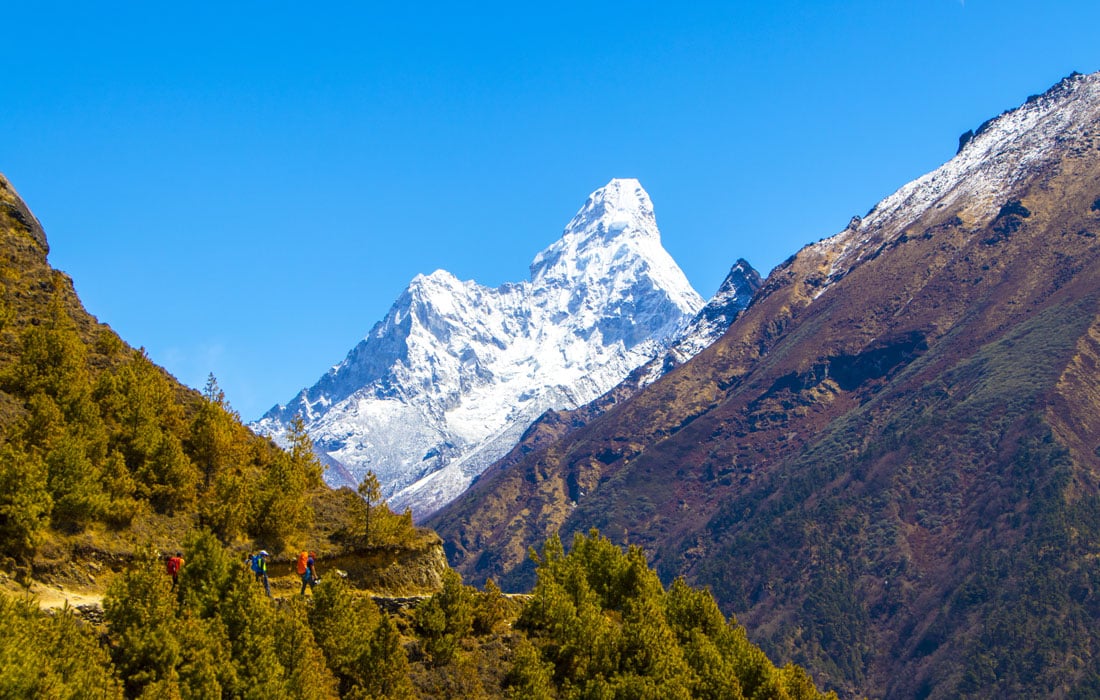















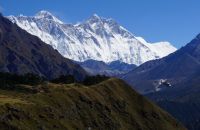
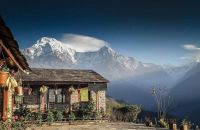
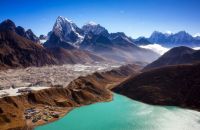
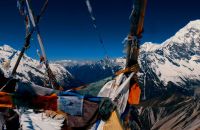
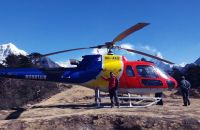
















Recent Comments